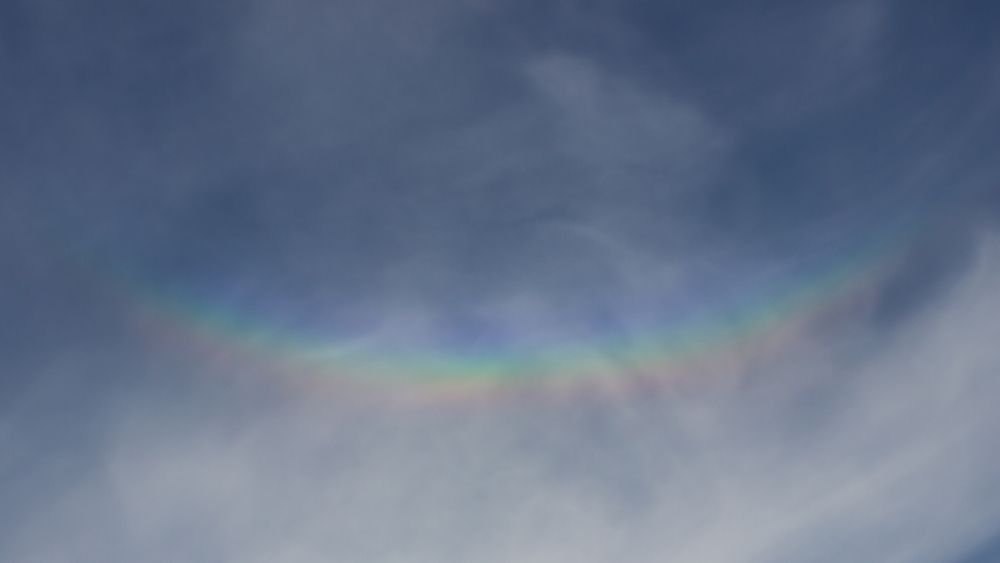Why Are There Upside Down Rainbows?

The world around us continues to amaze us each new day, producing newer and stranger phenomena and proving that we know very little about our planet. We are well aware of the beautiful rainbows that occur when it rains. However, most of us are not aware that there exists another type of rainbow: the Upside-Down rainbow, otherwise scientifically known as the Circumzenithal Arc.
What Is a Circumzenithal Arc?
Technically speaking, Circumzenithal arcs are not rainbows although they do belong to the same family of haloes. A halo is a white faintly colored ring that sometimes appears around the sun. In rare circumstances, haloes can also look around the moon (lunar haloes) although they require the planet to be at its brightest for one to view them. All haloes need ice crystals to form. Usually, these ice crystals only form in cirrus clouds. Cirrus clouds are very high clouds formed at heights of 20,000-40,000ft above the surface of the earth. They have a distinct tufty look and are usually the whitest clouds in the sky on any given day. One can see these clouds at any time of the year in the air. Due to the nature and unique positioning of the shadows, ice crystals can quickly form in these types of clouds although they rarely form actual rainfall.
Conditions Necessary for the Arcs to Form
It’s important to note that average rainbows are created as a result of refraction of light through raindrops while circumzenithal arcs are formed due to refraction of light through ice crystals. Upside down rainbows are just an optical effect that requires certain specific conditions to be fulfilled before they can appear. The sun’s angle in the sky is the crucial aspect to be considered here. It has to be at an altitude of fewer than 32 degrees in the atmosphere above the horizon. Anything above this and the arc will fail to form.
The clearest brightest and most vivid arches appear when the angle is approximately 22-22.5 degrees. When sunlight enters the top face of a hexagonal (six-sided) ice crystal, it is refracted through the prism-shaped side face at an angle of 22 degrees. The white light will then split into each of the colors seen in a rainbow with the violet color appearing at the top and red at the bottom of the arc. But since the sun is always moving across the sky, it means that the conditions required for the upside down rainbow to form are desperate to maintain as the sun shifts positions and changes angles every second. The circumzenithal arc, therefore, lasts for a short period unlike regular rainbows formed by raindrops.
When to View the Arcs
They are most likely to be seen in spring or autumn during the mid-morning and mid-afternoon hours. During summer, circumzenithal arcs can easily form around mid-morning and early evening. For those who are nearly perpetually in winter, you can view these beautiful rainbows late in the morning until mid-afternoon.











